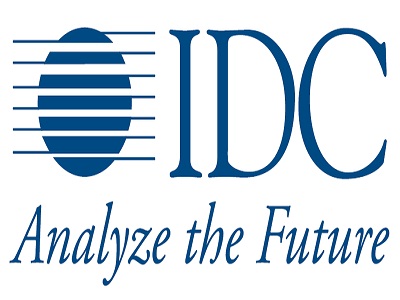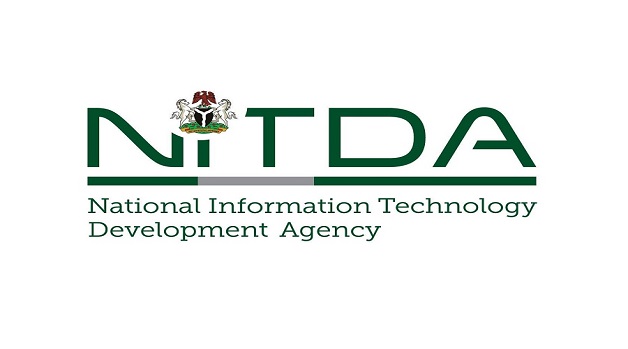E-Business
Top 10 Predictions for IT in 2014

International Data Corporation (IDC) during the week offered the first of its annual predictions for the coming year in the information and communications technology (ICT) industry.
IDC’s predictions for 2014 were heavily influenced by the 3rd Platform, the industry’s emerging platform for growth and innovation built on the technology pillars of mobile computing, cloud services, big data and analytics, and social networking.
DC’s predictions for 2014, presented by Gens in a Web conference, include the following:
Worldwide IT spending will grow 5% year over year to $2.1 trillion in 2014. Spending will be driven by 3rd Platform technologies, which will grow 15% year over year and capture 89% of IT spending growth. Sales of smartphones and tablets will continue at a torrid pace while outlays for servers, storage, networks, software, and services will fare better than in 2013. The PC market will remain under stress, with worldwide revenues down -6% year over year.
Emerging markets will return to double-digit growth of 10%, driving nearly $740 billion or 35% of worldwide IT revenues and, for the first time, more than 60% of worldwide IT spending growth. In the BRIC countries, IT spending will grow by 13% year over year, led by an economic recovery in China.
In dollar terms, China’s IT spending growth will match that of the United States, even though the Chinese market is only one third the size of the U.S. market. Elsewhere, emerging market growth will be uneven, ushering in the beginning of a new “Post-BRIC” era.
Within the 3rd Platform, value will start to migrate “up the stack”, from infrastructure as a service (IaaS) to platform as a service (PaaS) and from generic PaaS to data-optimized PaaS.
The latter will be most evident as Amazon Web Services rolls out an avalanche of platform-as-a-service offerings for developers and higher value services for businesses.
This will force incumbent IT suppliers – the companies that won market leadership in the 2nd Platform era – to urgently reconfigure themselves to fight for position in the 3rd Platform marketplace.
Joining them in the fight will be Google, which will realize it is at risk of being boxed out of a market where it should be vying for leadership.
The mobile device onslaught will continue in 2014 with sales of tablets growing by 18% and smartphones by 12%.
The Android community, led by Samsung, will maintain its volume advantage over Apple, while Apple will hold onto its value edge with higher average selling prices and an established ecosystem of apps.
But Google Play (Android) app downloads and revenues are making dramatic gains and the “app ecosystem value gap” will be significantly narrowed in 2014.
And the clock will be ticking louder for Microsoft, which needs to quickly double mobile developer interest in Windows.
Cloud spending, including cloud services and the technology to enable these services, will surge by 25% in 2014, reaching over $100 billion.
IDC expects to see a dramatic increase in the number of datacenters as cloud players race to achieve global scale.
This will be accompanied by a similar expansion in the variety of workload-specialized cloud infrastructure services, leading to new forms of differentiation among cloud service providers.
Finally, a pitched battle will be joined for the developers that can create the cloud-based applications and solutions that will fuel the market’s growth.
Spending on big data technologies and services will grow by 30% in 2014, surpassing $14 billion as demand for big data analytics skills continues to outstrip supply. Here the race will be on to develop “data-optimized cloud platforms”, capable of leveraging high volumes of data and/or real-time data streams. Value-added content providers and data brokers will proliferate as enterprises (and developers) look for interesting data sources as well as applications that help them to understand their customers, products, and the markets in which they exist.
Social technologies will become increasingly integrated into existing enterprise applications over the next 12-18 months. In addition to being a strategic component in virtually all customer engagement and marketing strategies, data from social applications will feed the product and service development process. IDC expects enterprise social networks will become increasingly available as standard offerings from cloud services providers.
This will enable enterprises to further embed social into the workflow, rather than having a separate “social layer.”
Datacenters represent the physical foundation underneath the cloud, and are thus a crucial component of the 3rd Platform.
As cloud-dedicated datacenters grow in number and importance, the market for server, storage, and networking components will increasingly be driven by cloud service providers, who have traditionally favored highly componentized and commoditized designs.
The incumbent IT hardware vendors, who have struggled to sell into this market, will be forced to adopt a “cloud-first” strategy, designing new innovations for initial release and widespread adoption in cloud service provider datacenters.
The 3rd Platform will deliver the next generation of competitive advantage apps and services that will significantly disrupt market leaders in virtually every industry.
A key to competing in these disrupted and reinvented industries will be to create industry-focused innovation platforms (like GE’s Predix) that attract and enable large communities of innovators – dozens to hundreds will emerge in the next several years.
IDC predicts that most of these industry platform players will not reinvent the cloud underpinnings they need, but will build on top Amazon, Microsoft, IBM, Salesforce, and others’ platforms. In 2014, it will be critically important for these IT leaders to find these emerging industry platform players and win their business.
Finally, the 3rd Platform will continue to expand beyond smartphones, tablets, and PCs in 2014 to the Internet of Things (IoT).
With IoT momentum building in 2014, IDC expects to see new industry partnerships to emerge as traditional IT vendors accelerate their partnerships with global telecom service providers and semiconductor vendors to create integrated offerings in the consumer electronics and connected device spaces. This kind of collaboration and coordination will be necessary to reach the 30 billion autonomously connected end points and $8.9 trillion in revenues that IDC believes the IoT will generate by 2020.
—
E-Business
Microsoft Servers Hacked by Chinese Groups

Chinese “threat actors” have hacked Microsoft’s SharePoint document software servers and targeted the data of the businesses using it, the firm has said.

China state-backed Linen Typhoon and Violet Typhoon as well as China-based Storm-2603 were said to have “exploited vulnerabilities” in on-premises SharePoint servers, the kind used by firms, but not in its cloud-based service.
The US tech giant has released security updates in response and has advised all on-premises SharePoint server customers to install them.
“Investigations into other actors also using these exploits are still ongoing,” Microsoft said in a statement.
The firm said it had “high confidence” the hackers would continue to target systems which have not installed its security updates.
It added that it would update its website blog with more information as its investigation continues.
Microsoft said it had observed attacks in which hackers had sent a request to a SharePoint server “enabling the theft of the key material by threat actors”.
Charles Carmakal, chief technology officer at Mandiant Consulting firm, a division of Google Cloud, told reporter, it was “aware of several victims in several different sectors across a number of global geographies”.
Carmakal said it appeared that governments and businesses that use SharePoint on their sites were the primary target.
A number of adversaries who stole material encoded by cryptography were then able to regain ongoing access to the victims’ SharePoint data, he said.
“This was exploited in a very broad way, very opportunistically before a patch was made available. That’s why this is significant,” Carmakal said.
Carmakal said the “China-nexus actor” was deploying techniques similar to previous campaigns associated with Beijing.
Microsoft said Linen Typhoon had “focused on stealing intellectual property, primarily targeting organizations related to government, defence, strategic planning, and human rights” for 13 years.
It added that Violet Typhoon had been “dedicated to espionage”, primarily targeting former government and military staff, non-governmental organizations, think tanks, higher education, the media, the financial sector and the health sector in the US, Europe, and East Asia.
Meanwhile, Storm-2603 was “assessed with medium confidence to be a China-based threat actor”.
E-Business
NIMC Warns Nigerians of Fake NIN Website

National Identity Management Commission (NIMC) has issued a public warning that it is not associated with NINcard.com.

According to the commission, the website has been circulating online to offer services for Nigerians seeking National Identification Number (NIN) services.
NIMC, in a post on its official X account on Wednesday, said, “NINcard.com is not in anyway affiliated to NIMC. Stay vigilant!”
The warning was accompanied by screenshots of fake payment receipts and OTP request pages from the website, both of which were boldly stamped “FAKE” by NIMC to alert the public.
E-Business
NITDA, API Partner Against Harmful Online Content

National Information Technology Development Agency (NITDA), in partnership with the Advocacy for Policy and Innovation (API), has convened a one-day workshop in Abuja to advance dialogue on the draft Online Harm Protection (OHP) Bill to confront harmful online content.

The bill, a rights-based, locally rooted, and multi-stakeholder initiative, is aimed at addressing the challenges of the digital age.
The event, which held yesterday, brought together government officials, civil society, academics, digital platforms, and legal experts to shape a policy framework designed to combat online ills such as cyberbullying, disinformation, hate speech, digital exploitation, and gender-based violence, while safeguarding democratic freedoms and digital inclusion.
In his keynote remarks, Kashifu Inuwa, director general, NITDA urged a paradigm shift in the way society engages with digital technologies.
“For almost two decades, we have viewed digital technology through a consumer lens. But these technologies are not just products and services. They are transforming how we live, work, and interact. They shape our politics, our society, and our democracy,” he said.
Warning against unaccountable digital power in the hands of private corporations, the DG likened the digital journey to the tale of Alice in Wonderland, where initial fascination with innovation has given way to deeper concerns about privacy, autonomy, and manipulation by big tech platforms.
“We thought we were using Google, but now we realise Google is using us. Social media, once a tool of expression, has become a tool of surveillance and influence,” Inuwa noted.
He, therefore, emphasised the urgency of developing a democratic and accountable framework. He explained that following the 2021 Twitter ban, NITDA facilitated dialogue between the government and platform operators, leading to a Code of Practice that stressed Nigeria’s sovereignty and legal standards.
According to him, the same process birthed the multi-stakeholder steering committee and the OHP White Paper in December 2024, laying the foundation for the current legislative push.
Earlier in her opening remarks, Victoria Manya, co-founder, API, observed the moral and civic necessity of the bill.
Her words: “The internet did not break society, it merely revealed its unfiltered version. Every day, Nigerians are exposed to harassment, disinformation, exploitation, and even algorithmic violence. The OHP Bill is not a war on the Internet. It is a peace offering to its users, a social contract for a digital future that is safe, inclusive, and democratic.
“We cannot answer the question of algorithmic power with unchecked state control. We must answer it with shared, rights-based governance. This bill must not be written for the people, but with them.”

 Telecom3 days ago
Telecom3 days agoMTN Nigeria Rewards 1,500+ Winners with ₦290m in Mega Billion Promo

 E-Financial3 days ago
E-Financial3 days agoNaira Slides Again, Hits ₦1,532.34/$ Despite CBN’s Dollar Push

 E-Business3 days ago
E-Business3 days agoMicrosoft Server Hack Likely Solo Actor, Thousands at Risk

 E-Business3 days ago
E-Business3 days agoFlaw in Microsoft SharePoint Sparks Global Cybersecurity Concern

 Telecom3 days ago
Telecom3 days agoMTN, MTV Base Launch “Room of Safety” Series to Promote Online Child Safety

 E-Financial2 days ago
E-Financial2 days agoKuda Unveils New Wallet for Multiple Currencies

 E-Financial3 days ago
E-Financial3 days agoFidelity Bank to Empower 100 SMEs Across Nigeria with Digital Tools

 Telecom3 days ago
Telecom3 days agoMENXTT Tech NG Debuts USA-Spec Devices and Redefines IT Retail in Nigeria


























